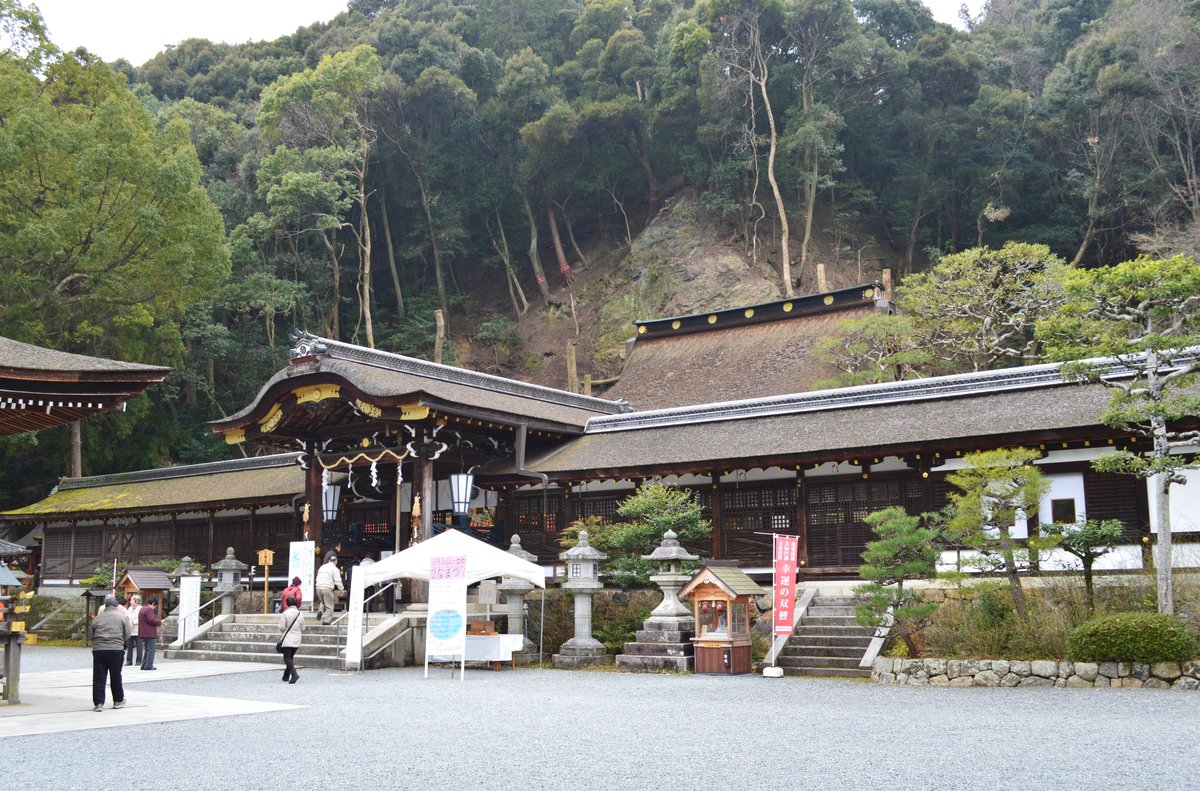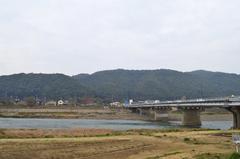
Matsunoo Taisha Kyoto: Visiting Hours, Tickets, and Historical Site Guide
Date: 14/06/2025
Introduction to Matsunoo Taisha: Kyoto’s Ancient Shrine
Matsunoo Taisha (also known as Matsuo Taisha or Matsuno-o Taisha) is a revered Shinto shrine nestled in the western foothills of Kyoto. Founded in 701 CE, it stands as one of Kyoto’s oldest and most significant spiritual sites. The shrine’s history is closely connected with the influential Hata clan, whose contributions to agriculture and sake brewing are legendary. Today, Matsunoo Taisha is famed for its unique Matsuo-zukuri architectural style, sacred springs, lush gardens, and vibrant festivals, making it a must-visit historical site for travelers seeking an authentic Kyoto experience.
This comprehensive guide covers Matsunoo Taisha’s history, deities, visiting hours, ticketing, transportation, festival highlights, and travel tips to help you plan a memorable visit. For the latest updates and official information, see the Matsunoo Taisha website, Japan Travel, and Kyoto KK.
Table of Contents
- Introduction
- History and Origins
- Spiritual Significance and Main Deities
- Sake Brewing Heritage
- Architectural Highlights and Gardens
- Festivals and Annual Events
- Visitor Information
- Nearby Attractions
- Frequently Asked Questions (FAQ)
- Conclusion
- References
History and Origins
Matsunoo Taisha’s history dates back over 1,300 years. The shrine was established by the Hata clan, immigrants believed to have come from the Korean peninsula via China, who brought advanced agricultural and sake brewing techniques to the region (J-HiStories). The site was chosen for its sacred spring, known as “Kame-no-I” (Turtle Well), whose pure waters have long been venerated for their purifying power and importance in sake production.
With the capital’s move to Kyoto (Heian-kyo) in 794, Matsunoo Taisha gained further prominence as a guardian shrine protecting Kyoto’s western entrance, complementing the Kamo shrines in the east. The shrine received imperial recognition in the 10th century and has since been a focal point for religious, agricultural, and community activities in Kyoto.
Spiritual Significance and Main Deities
Oyamagui-no-Kami: Guardian of Mountains
Oyamagui-no-Kami, the principal deity, is revered as the mountain protector, associated with forestry, agriculture, and the well-being of local communities (J-HiStories).
Ichikishimahime-no-Mikoto: Protector of Waterways
The secondary deity, Ichikishimahime-no-Mikoto, watches over rivers and seas, symbolizing the harmony between mountain and water—essential elements for the prosperity of Kyoto and its people.
The shrine’s dual devotion to land and water deities underscores its role in ensuring agricultural abundance and regional protection.
Sake Brewing Heritage
Matsunoo Taisha is regarded as the preeminent shrine for sake brewers across Japan. The sacred “Kame-no-I” spring is famed for providing water that is said to improve sake fermentation and flavor (J-HiStories). Sake brewers make annual pilgrimages to offer prayers and draw water for their brews. Decorative straw sake barrels (komodaru) and the cedar ball (sugidama) on the grounds symbolize the shrine’s deep ties to the sake industry (Kyoto KK).
Architectural Highlights and Gardens
Main Shrine (Honden) and Matsuo-zukuri Style
The main hall, rebuilt in the Muromachi period, exemplifies the rare Matsuo-zukuri architectural style. Its gently sloping, asymmetrical roof crafted from cypress bark and decorated with chigi and katsuogi creates a striking silhouette (Live Japan). The honden stands elevated on a stone platform, and the approach through torii gates and courtyards enhances the shrine’s sanctity.
Sacred Turtle Well (Kame-no-I)
This stone well, shaded by ancient trees, provides the shrine’s pure, sacred water. Rituals involving this water are central to the shrine’s sake-related ceremonies.
Shofu-en Gardens
Designed by Mirei Shigemori, the Shofu-en gardens consist of three distinct areas representing different periods and spiritual concepts. The gardens are especially popular in spring and early summer when plum blossoms and irises are in bloom (Live Japan).
Festivals and Annual Events
Matsunoo Taisha maintains a vibrant festival calendar, allowing visitors to witness authentic Shinto traditions:
- Matsuo Festival (April/May): Features mikoshi processions crossing the Katsura River and lively community celebrations (Kyoto KK).
- Wind-Bell Prayer Festival (June–September): Hundreds of colorful wind chimes are hung around the shrine, their sounds believed to purify visitors and bring good luck (Enjoy Osaka Kyoto Kobe).
- Sake Brewing Prayer Festivals (Spring & Autumn): Brewers from across Japan offer prayers and sake to the deities.
- Setsubun (February 3): Bean-throwing ceremonies to ward off evil.
- Shichi-Go-San (November 15): Blessings for children aged 3, 5, and 7.
For a full festival schedule, consult the Matsunoo-Taisha Official event page.
Visitor Information
Visiting Hours and Admission
- Shrine Grounds: Open daily, typically from 8:00 AM to 4:45 PM.
- Shofu-en Gardens: 8:30 AM – 4:30 PM (January 1 to February 28)
- New Year/Festival Periods: Extended hours may apply.
- Admission: Shrine grounds are free; gardens require a small fee (approx. 300–400 yen).
Access and Transportation
- Address: 224 Matsunoo Motoyama-cho, Nishikyo-ku, Kyoto 615-0881, Japan
- By Train: 5-minute walk from Matsuo-taisha Station (Hankyu Arashiyama Line)
- By Bus: Kyoto City Bus to Matsunoo Taisha-mae
- Parking: Limited onsite; public transport recommended (Google Maps)
Accessibility and Amenities
- Wheelchair Access: Paved paths and ramps throughout main areas. Some garden paths may be uneven.
- Facilities: Restrooms (including accessible toilets), souvenir shops, and small eateries are available.
- Photography: Permitted in most areas; restrictions may apply during rituals or inside certain buildings.
Nearby Attractions
- Arashiyama Bamboo Grove: Iconic scenic spot, about 20 minutes by train or bus.
- Katsura Imperial Villa: Celebrated for its architecture and gardens.
- Kameoka: Known for scenic boat tours and rural landscapes.
Frequently Asked Questions (FAQ)
Q: What are Matsunoo Taisha’s visiting hours?
A: The shrine is typically open from 8:00 AM to 4:45 PM; gardens from 8:30 AM to 4:30 PM. Hours may be extended during festivals and New Year.
Q: Is there an entrance fee?
A: Entry to the shrine grounds is free. The Shofu-en gardens require a small admission fee.
Q: Is the shrine accessible for wheelchair users?
A: Yes, most main areas are accessible; some garden paths may be uneven.
Q: Can I take photos?
A: Photography is allowed throughout most of the grounds and gardens, but please respect restrictions during rituals and inside buildings.
Q: How do I get to Matsunoo Taisha?
A: The shrine is a 5-minute walk from Matsuo-taisha Station on the Hankyu Arashiyama Line.
Q: When is the best time to visit?
A: Early mornings and festival seasons in spring and autumn provide the best experiences.
Conclusion
Matsunoo Taisha is a living testament to Kyoto’s enduring spirituality, craftsmanship, and community. Its sacred springs, elegant gardens, and unique festivals offer a profound glimpse into Japanese tradition. Whether you’re drawn by history, architecture, or cultural celebration, this shrine is an essential stop in Kyoto.
For the latest details, festival dates, and travel tips, visit the official Matsunoo Taisha website and consult respected guides like J-HiStories, Live Japan, and Kyoto KK.
References
- Matsunoo Taisha Official Website
- Matsunoo Taisha Guide – J-HiStories
- Live Japan – Matsunoo Taisha Highlights
- Kyoto KK – Matsunoo Taisha
- Enjoy Osaka Kyoto Kobe – Wind-Bell Festival
- Matsunoo-Taisha Official Event Page
For more insights and visual inspiration, explore our related articles on Kyoto’s historical sites, download the Audiala app for personalized recommendations, and follow us on social media for festival alerts and travel tips.











































































